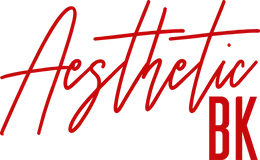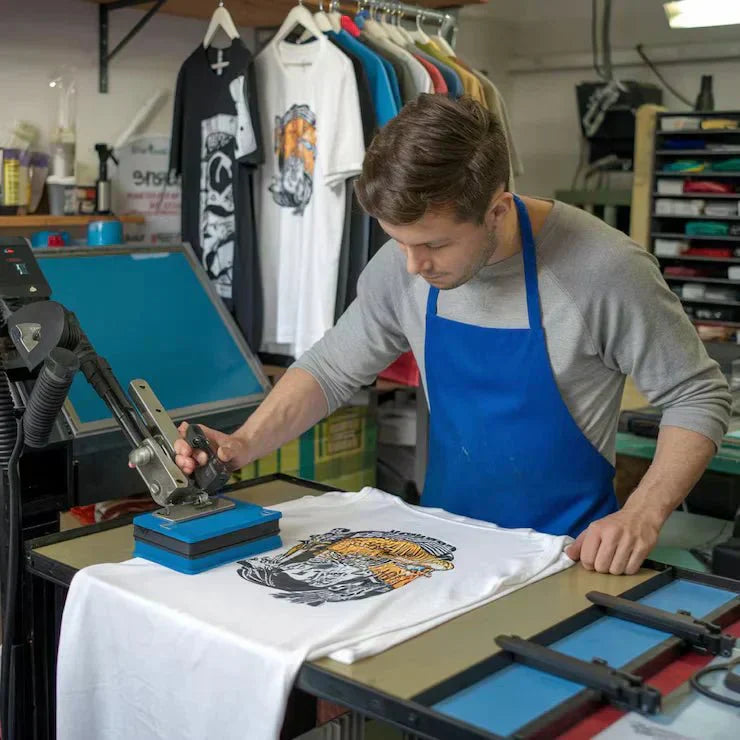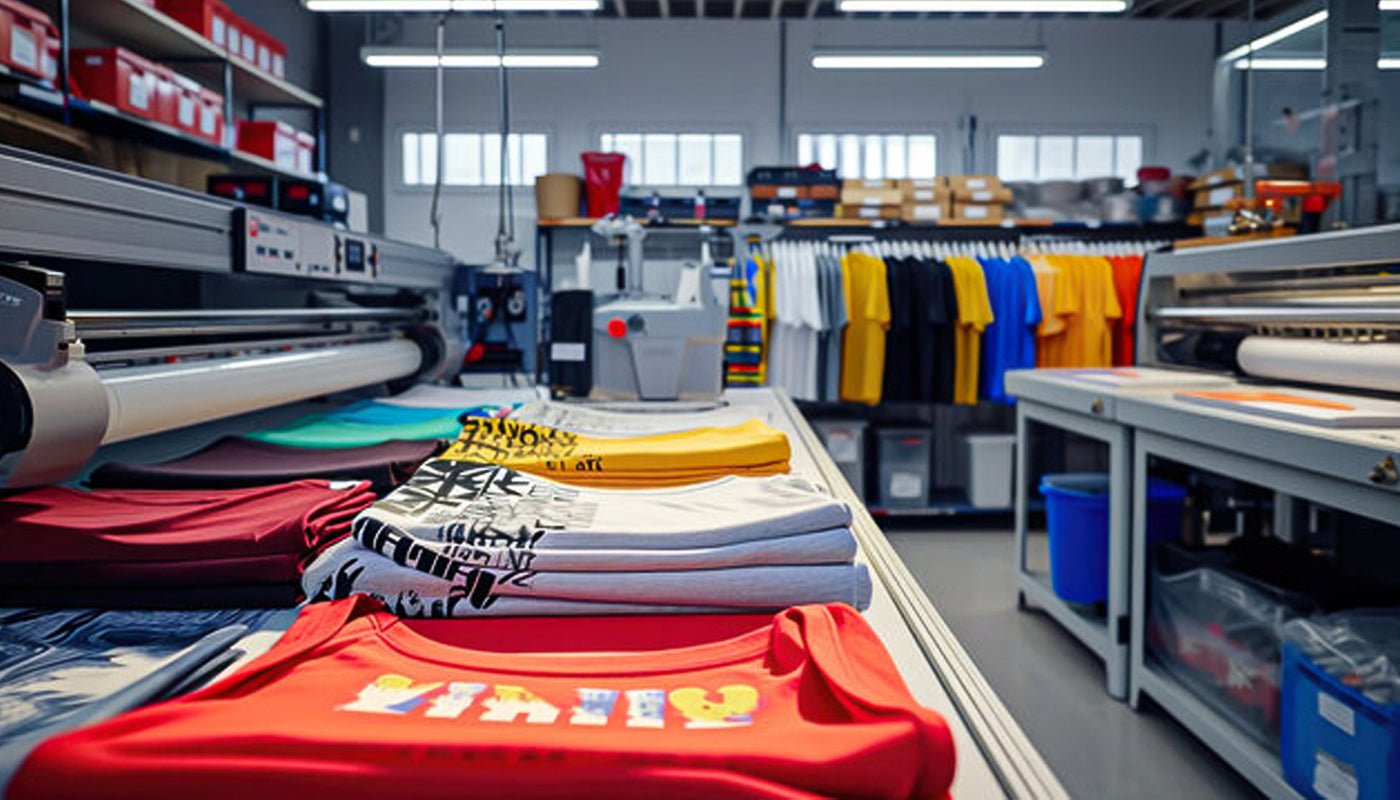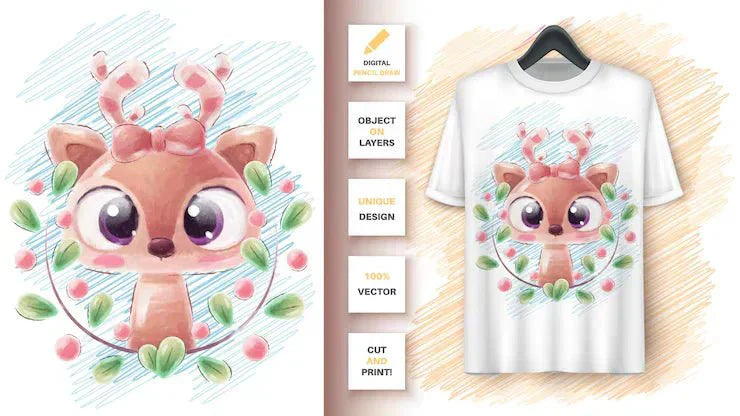Introduction
DTG printing has changed the game for custom apparel. Instead of traditional screen printing, it uses modern inkjet technology to print crisp, full-color designs directly onto your shirts. The result? Sharp, vibrant prints with no limits on detail, gradients, or complex color patterns.
In 2025, the popularity of custom DTG printing has skyrocketed—driven by the demand for personalized apparel, fast production, and eco-conscious solutions. Whether you’re printing one shirt or one hundred, DTG delivers professional quality without the high setup costs, making it a favorite among print-on-demand services, small businesses, and creative entrepreneurs.
The numbers speak for themselves:
- A 2024 Deloitte survey revealed that 1 in 5 consumers are willing to pay a 20% premium for personalized products.
- The global DTG market, valued at $985.5 million in 2024, is projected to grow at a CAGR of 11.2% through 2031 (Fortune Business Insights).
- The custom t-shirt market, worth $4.3 billion in 2023, is expected to reach $7.5 billion by 2030, growing at a 9.6% CAGR.
- Nearly 60% of small apparel brands now use DTG or hybrid digital printing technologies.
- Around 72% of eCommerce clothing stores rely on DTG printing services for their print-on-demand models.
- DTG’s use of water-based inks can reduce environmental impact by up to 40% compared to screen printing.
- Modern DTG printers can produce a custom t-shirt in under five minutes, making them ideal for fast-turnaround workflows.
Simply put, DTG printing is driving the shift from mass production to mass customization—and in 2025, it’s redefining the future of custom printing services in fashion, merchandise, and personalized retail.
Why You Should Care About DTG Printing in 2025
The apparel and merchandise industry is evolving rapidly with technology enabling customization and sustainability. DTG printing fits perfectly into this trend by offering flexibility, eco-friendliness, and high-quality output. This comprehensive guide will explain everything you need to know about DTG printing — from its working process and benefits to business insights and future trends.
Key takeaways –
- DTG printing uses inkjet technology to print designs directly on garments.
- It's ideal for small batches, detailed, multi-color prints, and quick production.
- Eco-friendly water-based inks reduce environmental impact.
- Best suited for cotton or cotton-blend fabrics.
- This guide covers technical details, business tips, costs, and troubleshooting.
What is DTG Printing?
Direct-to-Garment (DTG) printing is a modern digital printing method that allows ink to be applied directly onto fabric similar to how an inkjet printer works on paper. It enables detailed, vibrant, and full-color designs to be printed quickly and with precision.
DTG is rapidly becoming a favorite in the custom apparel world due to its ease of use, flexibility in small-batch orders, and ability to produce high-quality, photorealistic prints. Whether it’s for custom dtg printing & on t-shirts, branded merchandise, or one-off designs, DTG offers a fast and cost-effective solution for today’s print-on-demand needs.
The Rise of Personalized Products
In today’s world, customers no longer just want clothes—they want personalized products that reflect their identity, style, and creativity. This shift in consumer behavior is one of the biggest reasons DTG printing has exploded in popularity.
Today, personalized products like custom t-shirts, hoodies, hats, and tote bags are more popular than ever, as people love items that feel unique and personal. Whether it’s a catchy slogan, a favorite photo, or branded merchandise, people are willing to pay more for items that feel unique and personal.
Why is this trend growing so fast?
- Social Media Influence – Apps like Instagram, TikTok, and Pinterest have made fashion a way for people to show off their personality and stand out with custom styles. Custom pieces let individuals stand out.
- E-Commerce & Print-on-Demand – Online stores can now sell designs without holding inventory. With custom DTG printing, products are made only when ordered, reducing waste and upfront costs.
- Gift Culture – Personalized apparel has become one of the top choices for birthdays, holidays, and events, making DTG printing services essential for small businesses and online shops.
- Consumer Willingness to Pay More – According to recent studies, nearly 20% of shoppers are happy to pay a premium for personalized items.
Simply put, personalization isn’t just a trend—it’s the new standard. And DTG printing is at the center of this shift, powering the boom in custom apparel and creative self-expression.
Consumer Trends
Personalization is no longer a luxury, it's an expectation. Shoppers want products that tell their story, match their style, or convey a personal message. Whether it's a favourite quote, a specific design, or a loved one’s name, personalization adds the emotional value that generic items lack.
Popular Examples of Personalized Products:
-
Custom T-Shirts: Names, inside jokes, artwork, or personal quotes.
- Birthday or Anniversary Gifts: Printed photos, dates, or messages.
- Team Merchandise: Jerseys with individual names and numbers.
- Couple & Family Apparel: Coordinated prints for special occasions.
- Pet-Themed Shirts: Designs featuring pets’ names or portraits.
How Does DTG Printing Work? A Step-by-Step Guide
Understanding how DTG printing works helps you appreciate why it’s so popular for custom apparel. Here’s a detailed breakdown of the entire process.
Step 1: Design Preparation
- A digital artwork file is created or uploaded, usually in PNG format with a transparent background.
- The design is optimized for print size, colors, and resolution (usually 300 DPI or higher).
- Color profiles are adjusted to ensure accurate ink representation.
Step 2: Pretreatment of Garment
- The garment is pretreated with a special solution to help ink adhere better, especially for dark or colored fabrics.
- Pretreatment enhances color vibrancy, prevents ink from bleeding, and ensures durability.
Step 3: Printing
- The pretreated garment is loaded onto the printer’s platen.
- The print head sprays micro-droplets of water-based ink onto the fabric.
- For dark garments, white ink is printed first as a base layer, then the color inks go on top.
- The printer precisely controls ink application to produce highly detailed, vibrant prints.
Step 4: Curing
- The printed garment goes through a heat press or conveyor dryer.
- Heat activates and sets the ink into the fabric fibers, ensuring durability through multiple washes.
Step 5: Quality Inspection
-
Each garment is checked for color accuracy, print placement, and curing quality.
- Any inconsistencies or defects are addressed to maintain high-quality standards.
Advantages of DTG Printing
DTG printing has quickly become a preferred method in 2025 because it balances quality, flexibility, and sustainability. Here are the key advantages of dtg printing:
1):- High-Resolution, Full-Color Printing:
DTG printing excels at producing intricate, multi-colour designs with exceptional detail and colour accuracy. Unlike traditional screen printing, which requires separate screens for each colour, DTG can replicate complex images, gradients, and photographs directly onto garments without additional setup.
2):- Soft and Comfortable Prints:
The water-based inks used in direct to garment custom printing are absorbed into the fabric fibers, resulting in a soft hand feel that is comfortable to wear. This contrasts with some other printing methods that can leave a heavier or more textured finish.
3):- Minimal Setup and Quick Turnaround:
DTG printing requires minimal setup, making it ideal for small orders and quick turnarounds. There's no need for creating screens or extensive preparation, allowing businesses to fulfil custom orders efficiently.
4):- Eco-Friendly Process:
DTG uses water-based inks that are less harmful to the environment compared to plastisol inks used in some other methods. Additionally, the on-demand nature of DTG printing reduces waste by eliminating excess inventory and overproduction.
5):- Ideal for On-Demand and Custom Orders:
The flexibility of DTG printing makes it well-suited for on-demand production and personalized apparel. Businesses can offer a wide range of designs without the need for a large inventory, catering to niche markets and individual customer preferences.
Disadvantages of DTG Printing
While DTG printing offers amazing flexibility and quality, it’s not without its drawbacks. Here are some disadvantages of dtg printing to keep in mind before choosing it for your business or project:
Limited Fabric Compatibility:
DTG works best on 100% cotton or high-cotton blends. Printing on synthetic fabrics like polyester can result in poor ink adhesion and reduced print quality.
High Initial Investment:
The cost of DTG printers and necessary equipment (e.g., pre-treatment machines, and heat presses) can be substantial, which may be a barrier for small businesses.
Maintenance Requirements:
DTG printers require regular maintenance to prevent issues like ink clogging, especially if not used frequently.
Slower for Large Orders:
While great for small runs, DTG is less efficient for large-volume orders compared to screen printing, which can produce bulk orders more quickly and cost-effectively.
Learning Curve for Pre-Treatment:
Proper pre-treatment of garments is crucial for optimal print quality, and mastering this process can take time and practice.
Types of DTG Printers: Which One is Right for You?
When diving into Direct-to-Garment (DTG) printing, it’s essential to understand the different types of DTG printers available in the market. Each type varies in terms of print size, speed, price, and features, which influence your business capabilities and costs.
1. Entry-Level DTG Printers
Ideal For: Small startups, hobbyists, and low-volume printing.
- These printers are typically compact, affordable (ranging from $5,000 to $10,000), and easy to operate.
- They often have smaller platen sizes, usually suitable for printing standard T-shirt sizes.
- Entry-level models focus on usability rather than high speed or industrial throughput.
- Ink capacity tends to be lower, requiring frequent refills, and they may have less advanced pretreatment options.
- Examples: Epson SureColor F2100 (basic models), Brother GTX.
Pros:
- Low upfront investment
- Simple workflow
- Good print quality for small runs
Cons:
- Slower print speed
- Limited platen sizes
- May require more maintenance
2. Mid-Range DTG Printers
Ideal For: Growing businesses, small to medium print shops, and those wanting faster production with moderate volumes.
- These printers offer larger platen sizes (up to 16”x20” or more), higher print speeds, and improved color management.
- They typically support multiple garment types and sizes, including hoodies and bags.
- Ink systems often have larger cartridges, reducing downtime.
- Advanced pretreatment and curing setups may be integrated or recommended.
- Examples: Brother GTX Pro, Epson SureColor F3070.
Pros:
- Faster printing speeds
- Better color accuracy and consistency
- More durable print output
- Suitable for moderate order volumes
Cons:
- Higher upfront cost ($10,000 to $20,000+)
- Requires more technical knowledge for maintenance
3. Industrial DTG Printers
Ideal For: High-volume commercial printing, large apparel manufacturers, and professional print shops.
- Designed for mass production with automated loading/unloading systems and multiple platens for continuous printing.
- Supports printing on various garment types and materials—even thicker fabrics like sweatshirts and hoodies.
- Feature cutting-edge print heads, high-resolution output (up to 1200 DPI or more), and eco-friendly inks.
- Often integrated with pretreatment machines and conveyor dryers for streamlined workflow.
- Examples: Kornit Avalanche HD6, Aeoon Kyo, Brother GTX Pro BULK.
Pros:
- Extremely fast throughput (dozens to hundreds of prints per hour)
- Superior print quality and durability
- Automated processes reduce labor costs
- Built for 24/7 operation
Cons:
- Very high investment ($30,000 to $100,000+)
- Requires trained operators and dedicated workspace
- Maintenance can be complex and costly
DTG Printing Cost Breakdown (2025)
The cost of DTG printing depends on several factors, including the garment type, print size, ink usage, and order quantity. Unlike screen printing, DTG doesn’t require setup fees, which makes it ideal for small orders and on-demand services.
Average DTG Printing Prices (2025):
Single White T-Shirt (front print): $15 – $20
Single Dark T-Shirt (front print): $20 – $30 (includes pre-treatment + white ink layer)
Bulk Orders (50+ pieces, white shirts): $8 – $12 per shirt
Bulk Orders (50+ pieces, dark shirts): $12 – $18 per shirt
Key Cost Factors:
- Garment Type & Quality – 100% cotton shirts are cheaper, while blends or premium fabrics cost more.
- Design Size & Colors – Larger, full-color, or photo-quality prints use more ink, increasing cost.
- Order Quantity – Bulk orders lower the per-piece price, but DTG still suits smaller runs best.
- Pretreatment & White Ink – Printing on darker garments requires extra steps, making them more expensive.
- Turnaround Speed – Rush orders may include a premium fee.
Best fabrics for DTG printing
Choosing the right fabric is just as important as selecting the design for your custom apparel. The type of material affects print quality, color vibrancy, and durability. Here are the fabrics that work best with DTG printing in 2025:
1):- 100% Cotton:
Cotton is the most recommended fabric for DTG printing due to its high absorbency, allowing water-based inks to bond effectively. This results in vibrant and durable prints. It's widely used for apparel like t-shirts and hoodies.
2):- Combed and Ring-Spun Cotton:
Combed cotton undergoes a process that removes shorter fibers, resulting in a smoother and stronger fabric. Ring-spun cotton involves twisting and thinning the cotton strands to create a finer, softer yarn. Together, they provide a premium base for DTG printing, offering a soft feel and enhanced durability.
3):- Cotton Blends (50/50 Cotton/Polyester):
Blended fabrics combine cotton's softness with polyester's durability and wrinkle resistance. While they can be suitable for DTG printing, the presence of polyester may affect ink adhesion, requiring adjustments in pretreatment and printing settings.
4):- Tri-Blend Fabrics (Cotton/Polyester/Rayon):
Tri-blends offer a lightweight, soft texture with a vintage feel. However, their mixed composition can pose challenges for DTG printing, potentially leading to less vibrant colors and requiring careful pretreatment.
5):- Hemp:
Hemp is a durable, eco-friendly fabric with natural antimicrobial properties. Its high absorbency makes it suitable for DTG printing, though its rough texture may result in a more rustic appearance and slightly less sharp prints.
6):- Bamboo:
Bamboo fabric is soft, breathable, and naturally antimicrobial. It offers good ink absorption, leading to vibrant prints. However, its smooth texture may require adjustments in pretreatment to achieve optimal results.
DTG vs Other Printing Methods
When deciding on custom apparel printing, it’s important to understand how DTG compares to other popular methods. Each technique has its pros, cons, and ideal use cases.
1. DTG vs Screen Printing
Screen printing has been around for decades and is still a go-to for bulk orders. It involves creating a separate screen for each color, which makes setup time-consuming and costly for small runs.
DTG Advantage: No setup fees, making it ideal for single shirts, small batches, and complex, full-color designs.
Screen Printing Advantage: Very cost-effective for large orders with the same design. Durable prints that last a long time.
Best Use: DTG is best for custom, detailed, or small-quantity orders, while screen printing shines for high-volume production.
Read Full Guide: DTF Printing vs. Screen Printing: Which Print Method Wins?
2. DTG vs DTF Printing (Direct-to-Film)
DTF printing is growing in popularity because it allows printing on a wider variety of fabrics, including polyester and blends.
DTG Advantage: Delivers sharp, vibrant, full-color prints directly onto cotton fabrics with exceptional detail. Soft prints that feel integrated into the fabric.
DTF Advantage: Works on almost any fabric, including dark and synthetic materials, and allows for heat transfer flexibility.
Best Use: DTG works best for intricate designs on cotton garments, whereas custom DTF Transfers offers flexibility for blended fabrics and more specialized printing needs.
Read Full Guide: DTF vs. DTG: What You Need to Know!
3. DTG vs Embroidery Printing
Embroidery produces three-dimensional designs with threads, delivering a sophisticated and long-lasting finish.
DTG Advantage: Can handle complex, colorful, and photo-quality designs that embroidery cannot replicate. Soft and flexible prints.
Embroidery Advantage: Offers a professional, high-end feel for logos, uniforms, and hats. Extremely durable over time.
Best Use: DTG is ideal for artistic, colorful designs on t-shirts and apparel, while embroidery works well for branding and long-lasting wearables.
Many businesses use a combination of DTG and custom embroidery services depending on the garment type, design complexity, and target audience. This way, you can offer both vibrant prints and premium textured logos.
Tips for Your First DTG Design
Starting your first DTG project can feel exciting but a little overwhelming. To make sure your design looks professional and prints perfectly, here are some practical tips:
1. Keep Your Design High-Resolution
DTG printers work best with high-quality images. Make sure your design is at least 300 DPI to ensure crisp, detailed prints. Low-resolution files can appear blurry or pixelated on the shirt.
2. Consider Fabric Color
The color of your garment can affect how your design looks. Light-colored shirts usually give the most vibrant results, while dark fabrics may require pre-treatment and extra white ink for colors to pop.
3. Use Vector or Transparent PNG Files
For the best results, use vector graphics or PNG files with transparent backgrounds. This prevents unwanted borders and ensures your design blends seamlessly with the shirt.
4. Mind the Design Size and Placement
Think about where the design will sit on the shirt. Chest logos, full-front designs, or multi-placement prints can all affect the DTG printing process and cost. Start with a standard placement if it’s your first project.
5. Simplify for Small Details
DTG can handle complex designs, but extremely fine details might not print clearly, especially on textured fabrics. Keep your smallest elements larger than 1–2 mm for the best clarity.
6. Test Before Bulk Printing
Before placing a large order, print a sample shirt to see how the colors, size, and placement turn out. This helps guarantee that the finished shirts match your expectations perfectly.
7. Work with a Reliable DTG Service
Whether you’re using your own printer or a custom DTG printing service, make sure the provider has experience with high-quality prints. They can guide you on color management, pre-treatment, and fabric selection.
Also Read: What Is DTF Printing? Process, Benefits & Key Comparisons
FAQ Section:
Q1):- What types of designs can be printed with DTG?
Ans: DTG printing can handle detailed, full-colour designs, including photographs, gradients, and complex artwork.
Q2):- Is DTG printing cost-effective for small orders?
Ans: Yes, DTG is ideal for small batches and on-demand printing, as it doesn't require setup of screens or plates, making it more economical for short runs.
Q3):- How does the DTG printing process work?
Ans: The process involves preparing a high-resolution digital design, pretreating the garment (especially for dark-coloured fabrics), printing the design directly onto the fabric using a DTG printer, and then curing the ink to ensure durability.
Q4):- What types of garments are suitable for screen printing?
Ans: Screen printing is versatile and can be used on various fabrics, including cotton, polyester, and blends.
Q5):- Which method is more eco-friendly?
Ans: Both DTF and DTG printing methods use water-based inks, making them environmentally friendly. The eco-friendliness also depends on the specific inks and materials used in the printing process.
Conclusion
Direct-to-Garment printing has completely transformed how custom apparel is designed and produced. From its ability to produce vibrant, high-resolution designs to offering eco-friendly, on-demand production, it’s clear why this method has become a favorite for small businesses, eCommerce brands, and creative entrepreneurs in 2025.
Whether you’re creating one shirt or a hundred, DTG allows flexibility, minimal setup costs, and unmatched detail—making it ideal for personalized apparel and print-on-demand services. By choosing the right fabrics, understanding the printing process, and following best practices for your designs, you can achieve professional-quality results every time.
As the demand for unique, personalized products continues to grow, DTG printing stands at the forefront of this shift, empowering businesses and individuals to bring their creative visions to life. If you’re looking to start or scale your custom apparel business, embracing DTG printing is not just a smart choice—it’s the future of personalized fashion.




6 comments
Robertduh
Embark into the expansive universe of EVE Online. Test your limits today. Fight alongside millions of explorers worldwide. [url=https://www.eveonline.com/signup?invc=46758c20-63e3-4816-aa0e-f91cff26ade4]Join now[/url]
🔓 Reminder- Process 1,141982 bitcoin. Confirm >>> https://yandex.com/poll/enter/BXidu5Ewa8hnAFoFznqSi9?hs=dca5cdc7c4d9a48b2213f26d0e4102c2& 🔓
qqzich
* * * <a href="https://shoecareclinic.co.uk/index.php?3ki08j">Get Free Bitcoin Now</a> * * * hs=dca5cdc7c4d9a48b2213f26d0e4102c2* ххх*
c1kgy4
* * * Get Free Bitcoin Now: https://shoecareclinic.co.uk/index.php?3ki08j * * * hs=dca5cdc7c4d9a48b2213f26d0e4102c2* ххх*
c1kgy4
🖥 OYNAYIN VE KAZANIN! BUGÜN SADECE %150 PARA YATIRMA BONUSU, 80 FREESPIN VE %20 CASHBACK! OYNA => https://yandex.com/poll/enter/BXidu5Ewa8hnAFoFznqSi9?hs=dca5cdc7c4d9a48b2213f26d0e4102c2& 🖥
9ckws4
Leave a comment
This site is protected by hCaptcha and the hCaptcha Privacy Policy and Terms of Service apply.